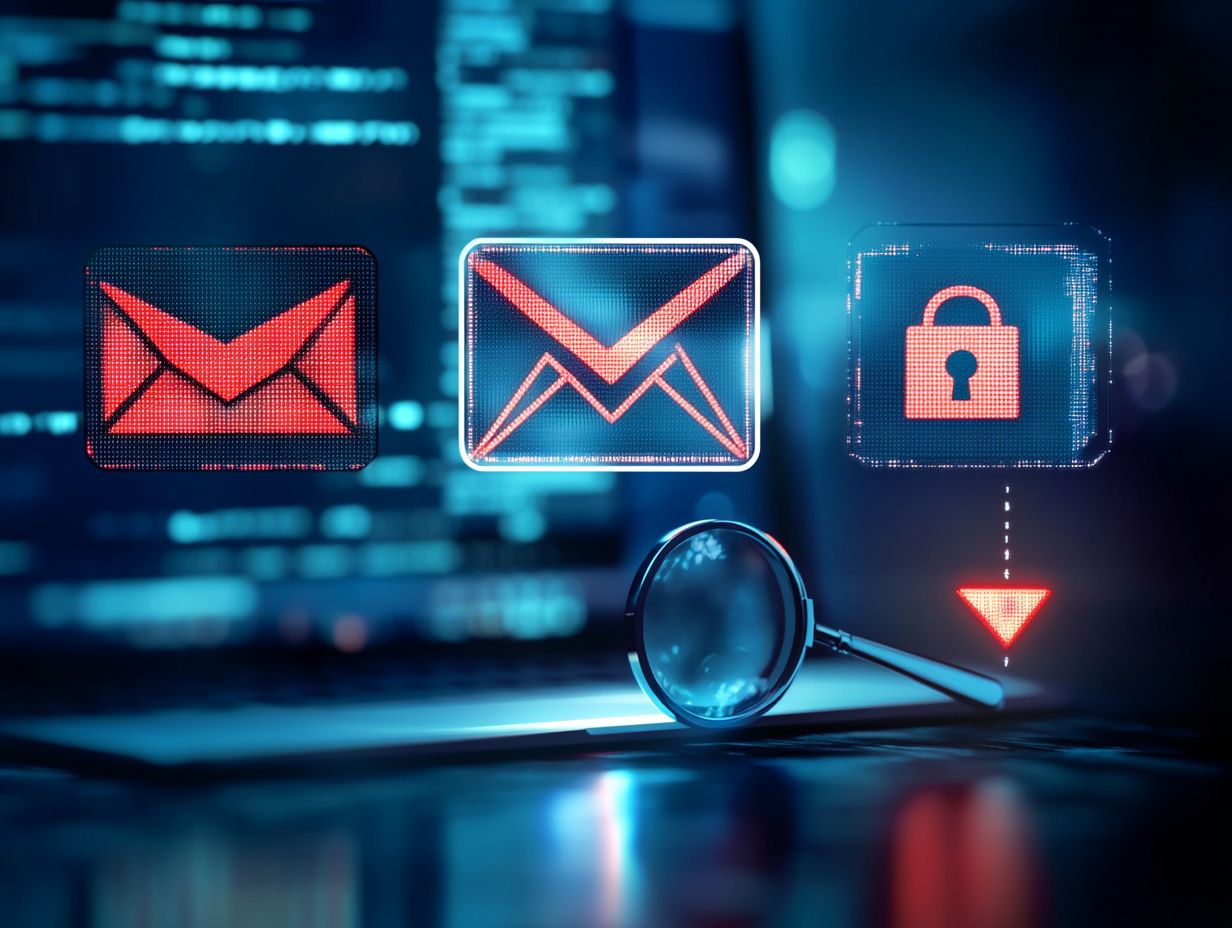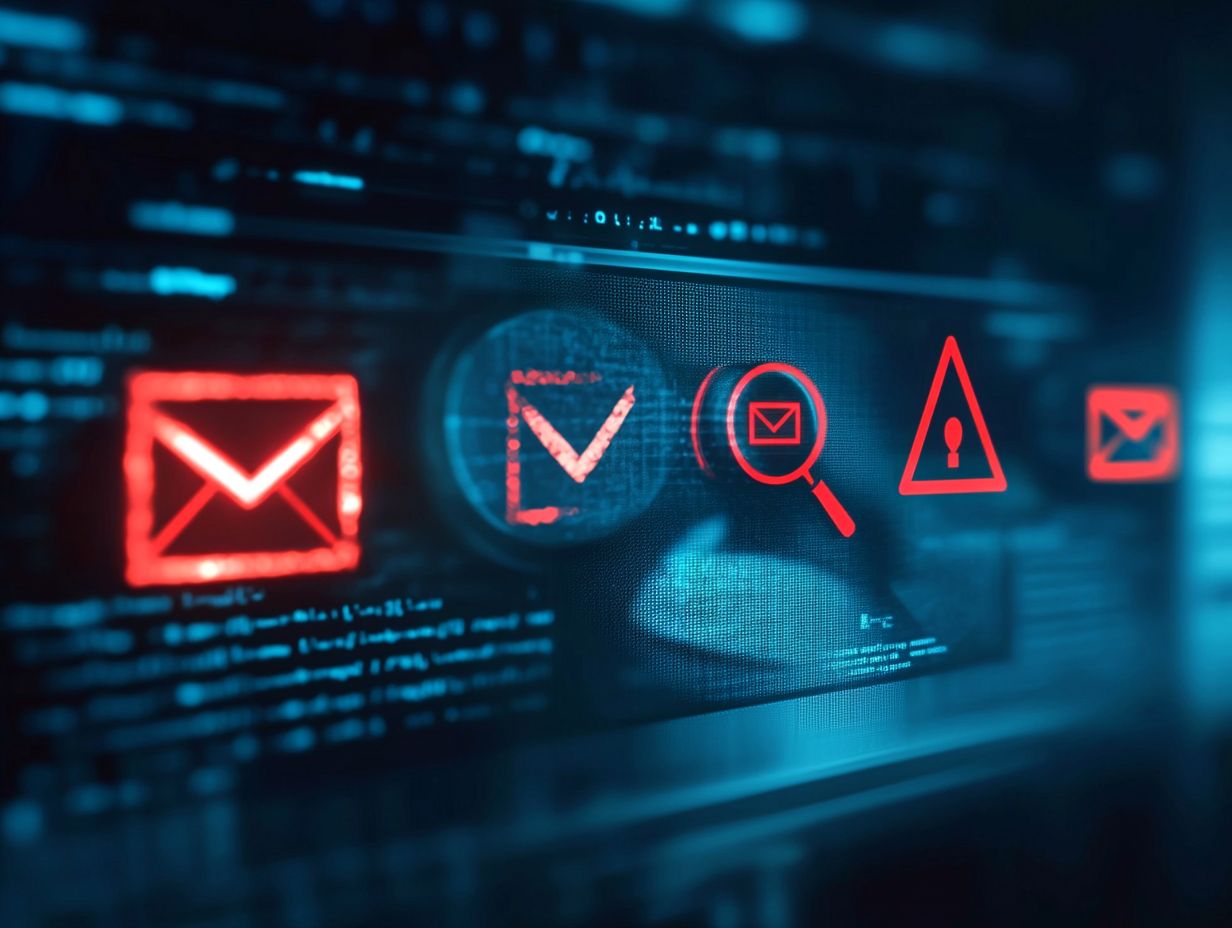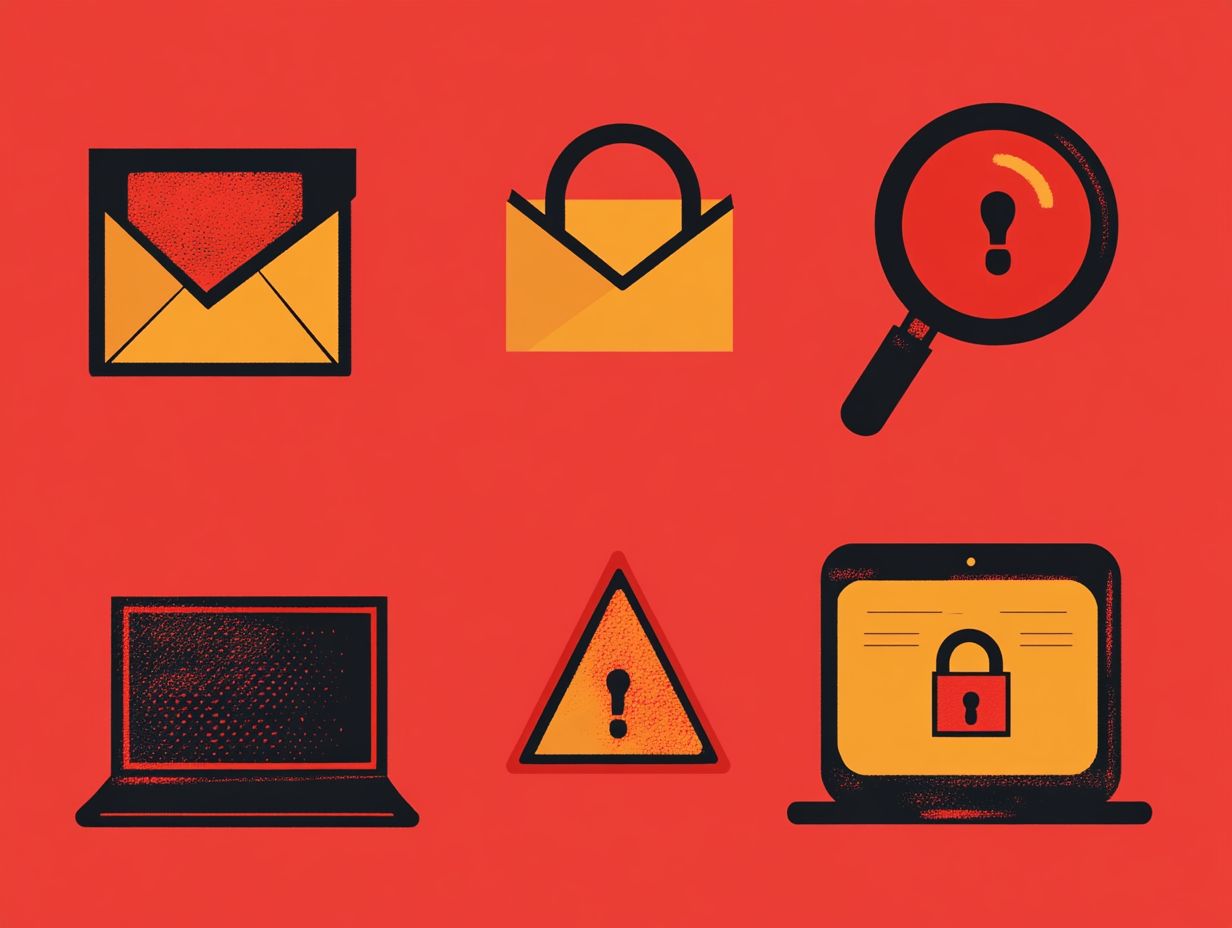5 warning signs of phishing emails
Phishing scams are increasingly prevalent, and recognizing how to identify them is essential for safeguarding yourself and your sensitive information.
This article outlines five key warning signs of phishing emails, from dubious sender addresses to glaring grammatical errors. It delves into the common tactics employed by scammers and offers tips for verifying the authenticity of emails. You ll also find guidance on what steps to take if you encounter a phishing attempt.
The article also explains how businesses can protect themselves against these threats and highlights the potential legal consequences of becoming a victim.
Stay informed and prioritize your safety.
Contents
Key Takeaways:

Act now! Be wary of suspicious sender email addresses they could be a sign of a phishing scam. Phishing emails often use urgent or threatening language to manipulate recipients into taking immediate action. Legitimate companies will never request personal information via email, so be cautious of any emails asking for personal data.
1. The Sender’s Email Address Is Suspicious
In the world of cybersecurity threats, recognizing a suspicious sender’s email address is essential for safeguarding yourself against phishing scams. Cybercriminals often exploit seemingly legitimate addresses to carry out their malicious intent and steal sensitive information from unsuspecting users.
A common red flag for potentially harmful emails is the use of free email services like Gmail or Yahoo. This is especially concerning when the email s context implies a professional setting. Unusual domain names or misspellings can also signal that the sender may not be who they claim to be.
Take a moment to verify the sender’s authenticity; it could save you from a phishing scam! Implementing robust email security measures is equally important in detecting and blocking phishing attempts, ultimately protecting your valuable personal and financial information.
2. Urgent or Threatening Language Is Used
Phishing emails often resort to urgent or threatening language, compelling you to act immediately. This is a classic tactic designed to exploit your sense of fear and urgency. It can cause you to overlook potential signs of phishing attacks.
Consider a scenario where a message suggests that your bank account will be frozen unless you verify your information right away. Such pressure can trigger a fight-or-flight response, distracting you from recognizing red flags.
Cybercriminals meticulously craft these messages to evoke a sense of impending doom, effectively manipulating your emotions. By creating the illusion of urgency, they significantly increase the likelihood that you ll click on a malicious link or divulge sensitive information without a second thought.
3. Requests for Personal Information

One of the telltale signs of phishing emails is the request for your personal information, like usernames and passwords. Cybercriminals aim to capture your credentials using deceptive tactics that often masquerade as harmless or even legitimate.
These requests can come in various guises, frequently framed as urgent notices from familiar institutions like your bank or online service providers. They might claim that your account has been compromised, pressuring you to verify sensitive details quickly.
Recognizing these tactics is essential; reputable companies typically communicate through secure channels and would never ask for sensitive data via email. By staying vigilant and questioning such requests, you can significantly reduce the risk of falling victim to these scams and protect your sensitive information.
Consider taking action today to secure your email accounts and share this valuable information with others!
4. Poor Grammar and Spelling
A prominent sign of phishing emails is poor grammar and spelling. Professional organizations uphold high standards in communication, so when you notice glaring mistakes, it s a significant red flag.
Online scammers can create believable stories. However, they often neglect language quality. This oversight can seriously damage their credibility.
For instance, phrases like “Your account has been suspended” instead of “suspended” or “Verify your account information immediately” demonstrate a clear lack of attention to detail. These grammatical errors not only disrupt the flow of communication but also serve as warning signs for potential victims. These errors can lead to serious consequences for you! Stay alert and don t let online scammers deceive you.
By recognizing these flaws, you empower yourself to differentiate between authentic messages and deceptive phishing attempts, ultimately creating a safer digital environment for your interactions.
5. Suspicious Attachments or Links
Phishing attacks often come wrapped in suspicious attachments or links that could lead to malware or phishing sites crafted to snatch away your personal information. If you don t scrutinize these elements carefully before engaging, you could find yourself at significant risk.
To effectively guard against these threats, it s essential for you to be aware of the warning signs typically associated with phishing attempts. Keep an eye out for odd email addresses, grammatical blunders, or urgent language demanding immediate action.
Using URL preview services can help you identify unsafe links before you click, adding an extra layer of security. Employing reputable antivirus software can also enhance your defenses by detecting malicious attachments and scanning emails before they even hit your inbox. By embracing these preventive measures, you can stay one step ahead of online scammers and safeguard your sensitive information from potential breaches.
How to Protect Yourself from Phishing Scams?

To effectively shield yourself from the rising tide of phishing scams, it s essential to cultivate a keen awareness of these threats. This involves implementing robust email security practices and engaging in ongoing phishing training, giving you the power to recognize and respond aptly to potential dangers.
By adopting practical measures like enabling two-factor authentication, you can add an extra layer of security that significantly mitigates the risk of unauthorized access. Familiarizing yourself with common phishing techniques such as suspicious links, urgent requests for sensitive information, and impersonations of legitimate organizations becomes crucial in identifying deceitful attempts.
Participating in regular corporate training programs not only enhances your knowledge but also nurtures a culture of vigilance within your organization. This reinforces the idea that education is indeed a powerful weapon in the battle against these malicious schemes.
What Are the Common Tactics Used in Phishing Emails?
Common tactics found in phishing emails include misleading subject lines, impersonation of trusted entities like banks or government agencies, and a sense of urgency designed to trick you into revealing sensitive information or credentials.
These emails often contain links that lead to counterfeit websites crafted to look remarkably authentic, enticing you to enter your login details. For instance, you might receive an email claiming your bank account is at risk, urging you to click a link that seems legitimate but actually redirects you to a fraudulent site.
Online scammers frequently employ scare tactics, such as asserting that a tax refund is pending, compelling you to act swiftly without taking a moment to verify the source. By recognizing these methods, you can sharpen your vigilance and significantly lower the chances of falling victim to such scams.
Be proactive! Review your email security today.
How Can You Verify the Authenticity of an Email?
Verifying the authenticity of an email requires careful examination of sender information. Be sure to scrutinize links before clicking and ensure that any requests for personal information adhere to established email security protocols.
Start by closely examining the sender’s email address. Confirm it matches the official domain of the organization it claims to represent.
Next, hovering over any links will reveal their true destination. This helps you sidestep potential phishing attempts. Don’t hesitate to ask others in your network if they’ve received similar communications; this can provide valuable context and validation.
Utilizing tools such as email verification services and anti-phishing software can significantly enhance your process. These resources help you identify red flags and ensure your digital security remains intact.
What Should You Do If You Suspect a Phishing Email?

If you suspect a phishing email, act immediately. Refrain from clicking on any links or attachments. Instead, report the email to your organization s email security team and delete it promptly to avoid any accidental exposure to cyber threats.
These actions are vital for protecting your personal information and the integrity of the entire organization. It s important to share your experience with colleagues. This collective awareness empowers others to recognize similar threats in the future.
Encourage your peers to adopt a cautious mindset. Discuss the warning signs of phishing attempts, like unusual greetings or unexpected requests for sensitive information.
Reporting the incident to the appropriate authorities strengthens overall security measures and fosters a proactive approach against future phishing attacks.
How Can Businesses Protect Themselves from Phishing Attacks?
You can effectively shield your business from phishing attacks by implementing robust defense strategies. Start with regular training sessions for your employees to enhance their awareness and understanding of these threats.
Strong email security measures, combined with advanced technologies like machine learning, will equip you to detect and thwart potential risks.
To truly fortify your digital environment, prioritize ongoing education that empowers your staff to recognize suspicious emails and links. Establish strict security protocols, such as a security method that requires more than one way to prove identity and routine password updates, to significantly reduce vulnerabilities.
By embracing state-of-the-art threat detection technologies, including AI-powered tools that continuously monitor network activities, you enable quicker identification and response to potential phishing attempts. This proactive approach creates a more secure workplace and cultivates a culture of vigilance across your organization.
What Are the Legal Consequences of Falling for a Phishing Scam?
Falling victim to a phishing scam can lead to serious legal consequences for you, especially if it results in data breaches that expose sensitive information. This can trigger investigations by regulatory bodies like the FTC and bring repercussions for your organization.
Take recent incidents involving high-profile companies as a cautionary tale; their negligence in protecting customer data has led to substantial fines and significant damage to their reputations. You are legally obligated to comply with regulations such as GDPR and HIPAA, which require strict protocols for data protection.
Ignoring these standards could incur hefty financial penalties and erode consumer trust. The legal ramifications don t stop there; you might also face litigation from affected parties, making recovery even more challenging for your organization.
Thus, staying vigilant against phishing attacks is not merely a matter of cybersecurity it s an essential legal responsibility that you cannot afford to overlook.






